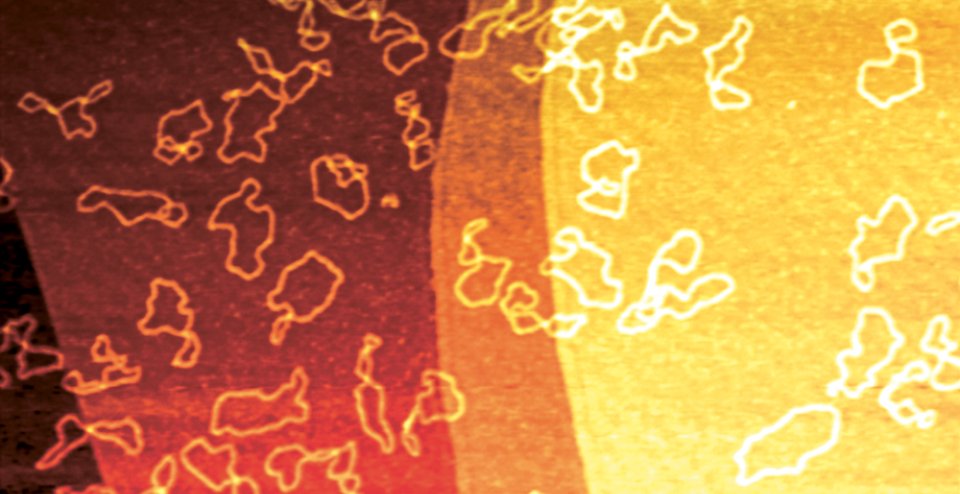
Science of Structures and 3-D Code
Research topic
For some time, modern imaging techniques have made possible an animated journey through heterogeneous structural levels; this has now moved into the area of direct observation. After the long 20th century with its grand structural revolutions and formalisation in the areas of engineering and natural sciences, the structuralism of the humanities, the informational structures of data processing, electronics and genetics as well as the exploration of nano worlds, structures and, as a consequence of the new concepts of active matter – dynamic material structures in particular – have gained a significance that goes far beyond the imaginations of classical structural thinking. This leads to a new understanding of the multi-dimensional code of materials. Disciplinary and interdisciplinary experiments and studies on active matter as as well as the code-materials dualism still to be explored are currently available for establishing a new structural science as a field within the humanities and science of materials. The priority project connects future-oriented research with historical perspectives in order to lay down criteria for linking various disciplines under the sign of dynamic structures or of the code-materials dualism and thus setting up the outlines of a new structural science.
In the video “Powers of Ten” (1968), C. and R. Eames optically zoomed through cosmic and microcosmic dimensions by powers of ten. With new imaging technologies, this range has long been shifted into the realm of direct observation, by means of heterogeneous and hierarchical structural levels. The long 20th century left us with major structural revolutions and formalizations in engineering and the natural sciences; structuralism in the humanities; computer-science structures of data processing, electronics, and genetics; and the discovery of the world of nanostructures. These structures have achieved a level of significance that goes far beyond the dimensions of classical structuralism; they can now be used to establish an interdisciplinary and a new disciplinary context. This project will connect future-oriented research with historical perspectives and will establish criteria for new connections between different disciplines under the rubric of structures.
Objectives
Our goals are:
- To assess the projects’ structural investigations and to analyze these structures across the domains of artifacts and natural objects in a transdisciplinary way. We will study combinations of structures and functions in an exemplary fashion. On this basis, we will develop typologies of elementary structure-function relationships and thus establish the foundations for a structures data repository.
- To create a link to historical and unresolved projects; as an example, R. Buckminster Fuller, inspired by E. Haeckel and D’Arcy Thompson, developed a natural-artificial geometry as “synergetics,” which in the last few years C. Alexander has investigated as configurations of an “order of nature.” This transdisciplinary structural analysis questioned the possibility of a material science of structures. There are hardly any academic fields that would not be relevant to this perspective. Of particular significance are architecture, structural engineering, and the nanosciences, followed by disciplines that play a role in the context of classical structuralism (sociology, psychology).
- To use a science of structures as a theoretical and practical integrative basis for an interdisciplinarily organized Gestaltung of knowledge. The focus on design would examine the materializability and manageability of structures. As in computer science, which was formed as a discipline in the 1960s, the analog code of structures would provide a homogenous dimension for establishing coherent questions across all classical disciplines. In contrast to structuralism (Dosse 1991), this would be a clearly contoured research field that could create a disciplinary dynamic for a science of structures on a new interdisciplinary level.
- To develop an operative structure in which the cluster itself is a central object of investigation and Gestaltung. As spatiotemporal, material, and “architectural” elements, structures are equally constructive and dynamic. The cluster as a hive and an interactive group consists not only of the participants, but also of the linked data cloud housing the researchers, their instruments, images, and documents. The Laboratory of the Laboratory will therefore also be developed on a formal and content-based level as a laboratory structure and a laboratory of structures.
- To analyze structure-function relationships, proceeding from elementary structures in the sense of geometric elements. When such relationships show that certain structures under certain conditions can fulfill specific functions, we can ascribe an information value to these relationships. Whenever this constellation appears, the corresponding function is realized as its specific information. We will investigate the extent to which structures (as analog spatial 3-D forms) can be taken as code elements that both represent and realize their function as an operation characteristic. The spatial design of inherent structures can thus be observed as a realization of specific 3-D code elements.
Execution
Concrete studies will focus on exemplary objects:
- Diatoms, whose diverse and highly complex structure has long fascinated scientists, will be analyzed vis-à-vis the mechanisms of their genesis, which are little understood.
- The microstructures that are caused by the distortion of crystal structures in appropriate materials will be classified; to date they have only been investigated from the perspective of mathematics and engineering.
- The topologically determined properties of biological and biomimetic macromolecular structures will be investigated to see which elementary 3-D structures (coiled coil-structures, multiple helices) can be realized with the aid of covalently bound atom chains (i.e., flexible, quasi-one-dimensional molecular structures whose generic secondary structure is helical). Similarly, we will ask which 3-D structures can be realized by means of covalently bound atomic lattices (i.e., flexible – and hence extensible – quasi 2-D structures, as in graphs).
- Geometrical elements as analog codes will be investigated from a media-historical and Gestaltung-based perspective, and we will attempt to implement them as operative models.

